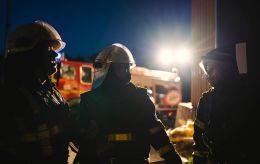Hunting for EW and air defense: How Ukraine's Raid Battalion operates in Kursk region
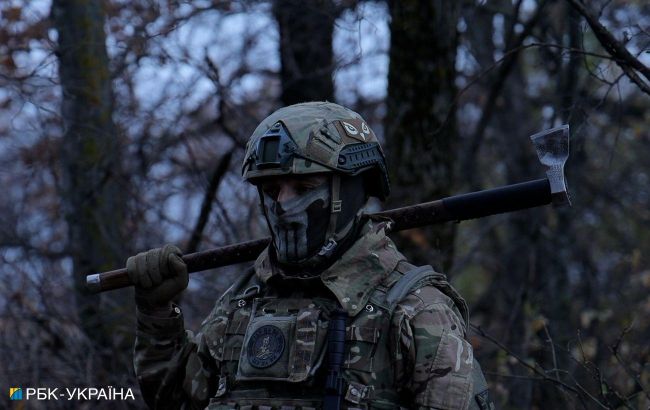 A fighter of the Raid battalion (all photos: RBC-Ukraine)
A fighter of the Raid battalion (all photos: RBC-Ukraine)
Ukraine's 413th Raid separate battalion of unmanned aerial systems was one of the first to join the Kursk operation. Read more about their work in RBC-Ukraine's report from the Kursk sector.
The Kursk operation was prepared in complete secrecy. Unlike the Ukrainian Armed Forces counteroffensive in the south in June 2023, it was not discussed in the media or among military analysts until the very beginning. And even the first few days of the breakthrough in Kursk were accompanied by complete media silence. Only later did the military get the opportunity to tell how everything happened in August and what the situation is now.
Heavy equipment and military units were moving to the border with Russia in the Sumy region in secrecy, disguised among the forests until they were ready and ordered to go on the offensive.
On August 6, in the morning, the Armed Forces of Ukraine crossed the border with Russia and began the first battles in the Kursk region. Within a few days of the operation, the Ukrainian military controlled hundreds of square kilometers of Russian territory. At the same time, Russian conscripts and soldiers guarding the border were captured. Later, the Ukrainian command said that the operation was carried out to create a buffer zone on Russian territory.
See RBC-Ukraine's report on Russian prisoners from the Kursk region here.
The fighting in the Kursk region has been going on for 6 months now, and the Russians have managed to recapture some of the settlements. North Korean soldiers came to help the Russians.
This section of the front remains crucial for Ukrainian forces, so the Armed Forces of Ukraine continue to conduct offensive operations. Dozens of the most powerful brigades and units of the Armed Forces of Ukraine are deployed here, including the 413th Raid separate battalion of unmanned aerial systems, with which RBC-Ukraine's military correspondent went on duty.
Almost every road in the Sumy region has the marks of the Russian so-called brotherhood. The closer you get to the border, the more destroyed houses, burned cars, and bombed roads you see. Along the road, red signs with the words “mined” can be seen everywhere. All the fields and roadsides are still dotted with mines, so it is strictly forbidden to turn off the road. Instead of bridges, there are pontoon crossings. As we crossed the river, we could see the support of a bridge nearby. It was blown up at the beginning of the fighting to block the Russians' path.
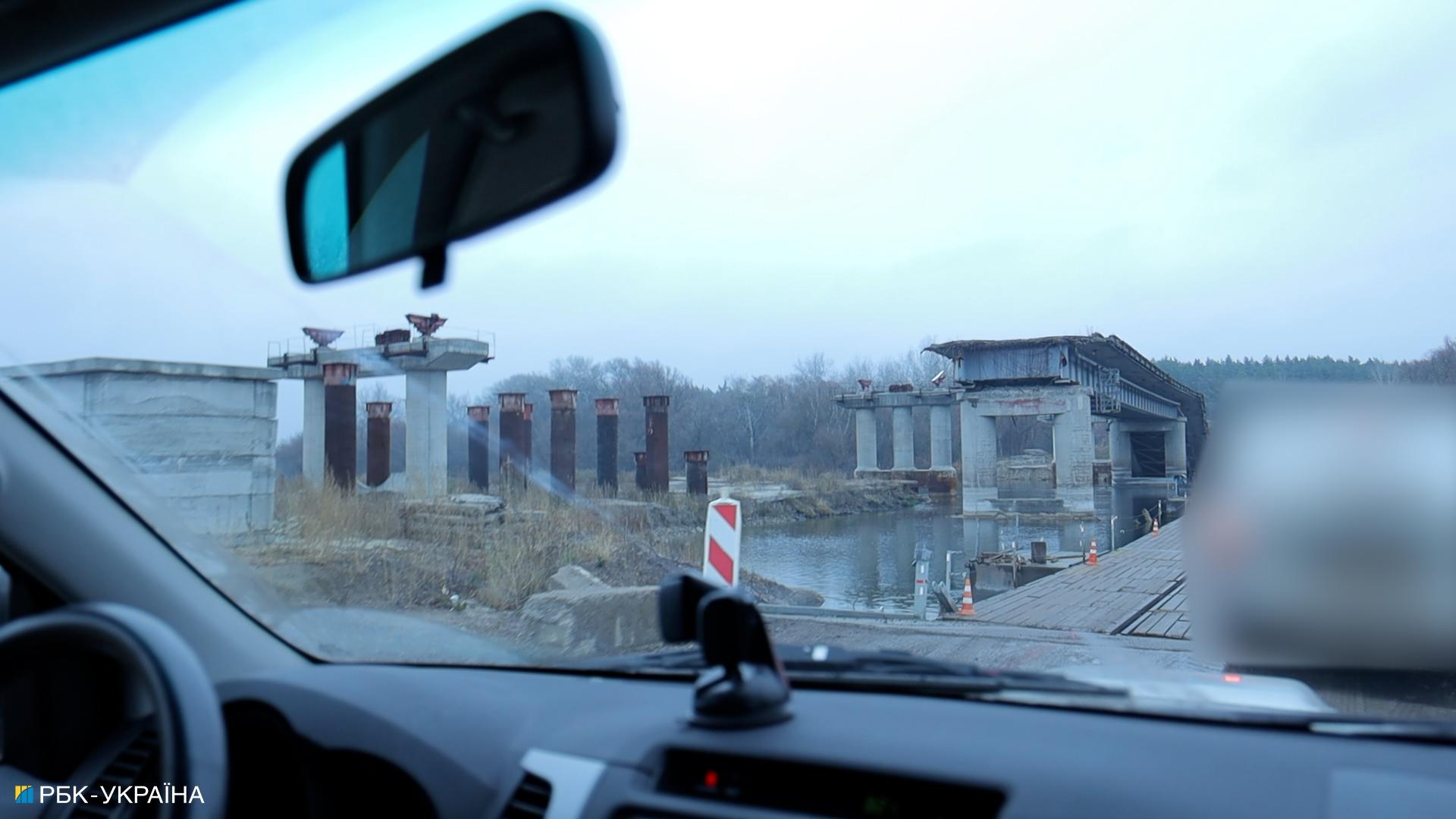 Photo: RBC-Ukraine
Photo: RBC-Ukraine
We arrive at the deployment point. The northern front has different climatic conditions, it is much colder here, with howling winds and constantly bad weather. These are all important factors that complicate the work of unmanned systems teams. Under certain conditions, it is impossible to carry out flights.
The team quickly gets to work. They need to unload the equipment, install the antenna, and prepare the drone for operation. This is a large airplane-type drone designed for long-range surveillance.
"Now the Russians have become significantly more active and have been trying to drive Ukrainian forces out of their positions for 5 days. But he is not succeeding, as we are successfully repelling these attacks,” says the crew commander with the call sign Dzvonar (Bellman).
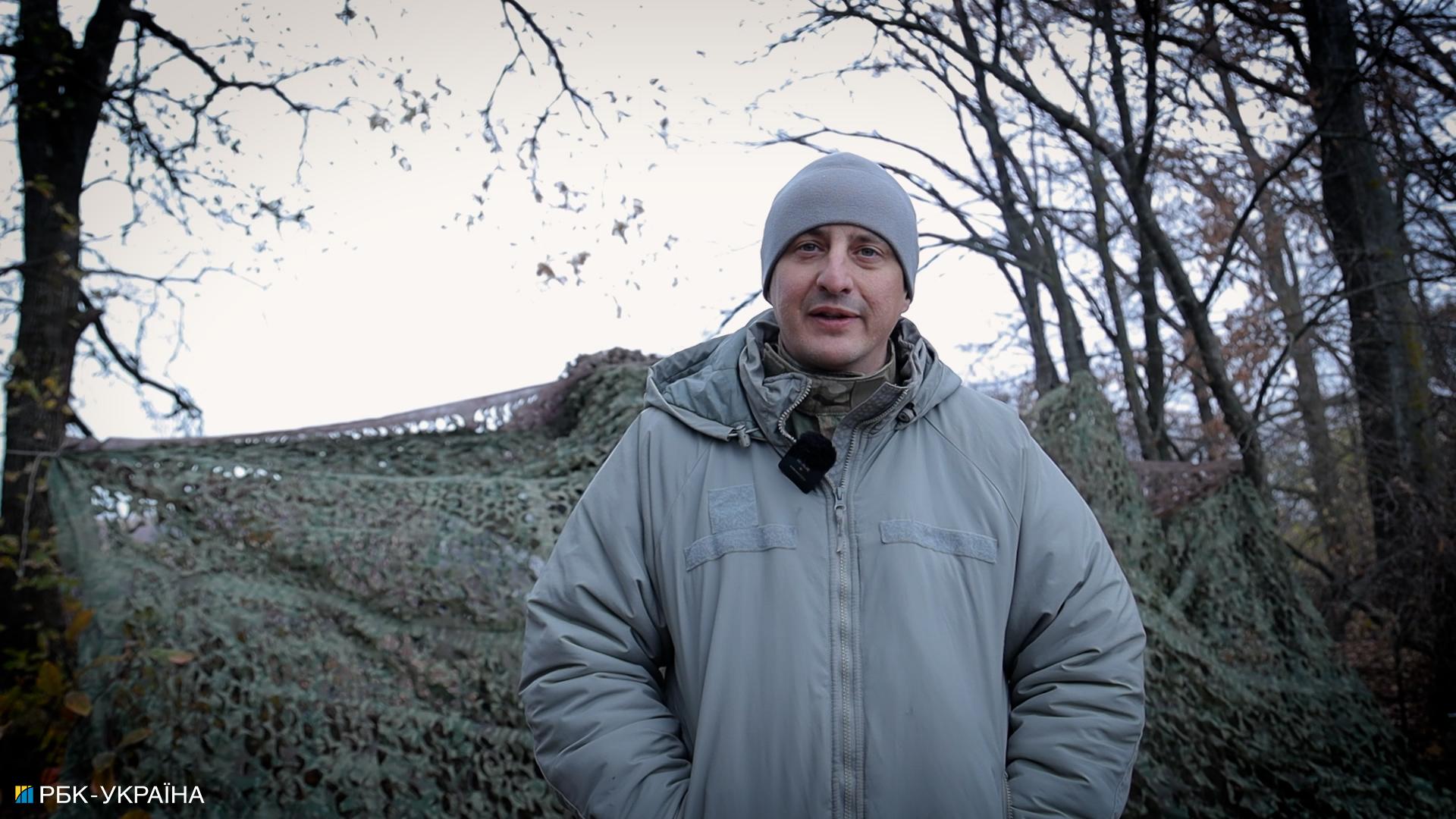 Commander Dzvonar, photo by RBC-Ukraine
Commander Dzvonar, photo by RBC-Ukraine
The crew's main task is to identify enemy personnel concentrations, enemy equipment, and high-priority Russian army targets. The crew also adjusts the firing on the identified targets for other units.
"We detected and then destroyed Russia's S-400 system, which was located north of the city of Kursk. This is a strategic-level air defense system. Recently, the Pole-21 electronic warfare station was destroyed. The high-priority target of the Zoo radar was also destroyed. And the latest Zemledelie rocket-propelled salvo remote mining system was burning very well. It has recently been tested on Red Square, and we have successfully utilized it in the Kursk direction,” says Dzvonar.
“While the guys are setting up their portable base, I'm watching the scenery. But beyond the horizon the picture is not pleasant at all - the fighters say that Russians are already stationed there.
The crew's vehicle is a real mini-office, with a bunch of equipment and monitors, which will later display the image from the drone's camera. Soon, a message about the target is received, and everyone gets ready to work.
"The electronic intelligence detected air defense systems, so we need to detect them and launch a strike, says a fighter with the call sign Alf.
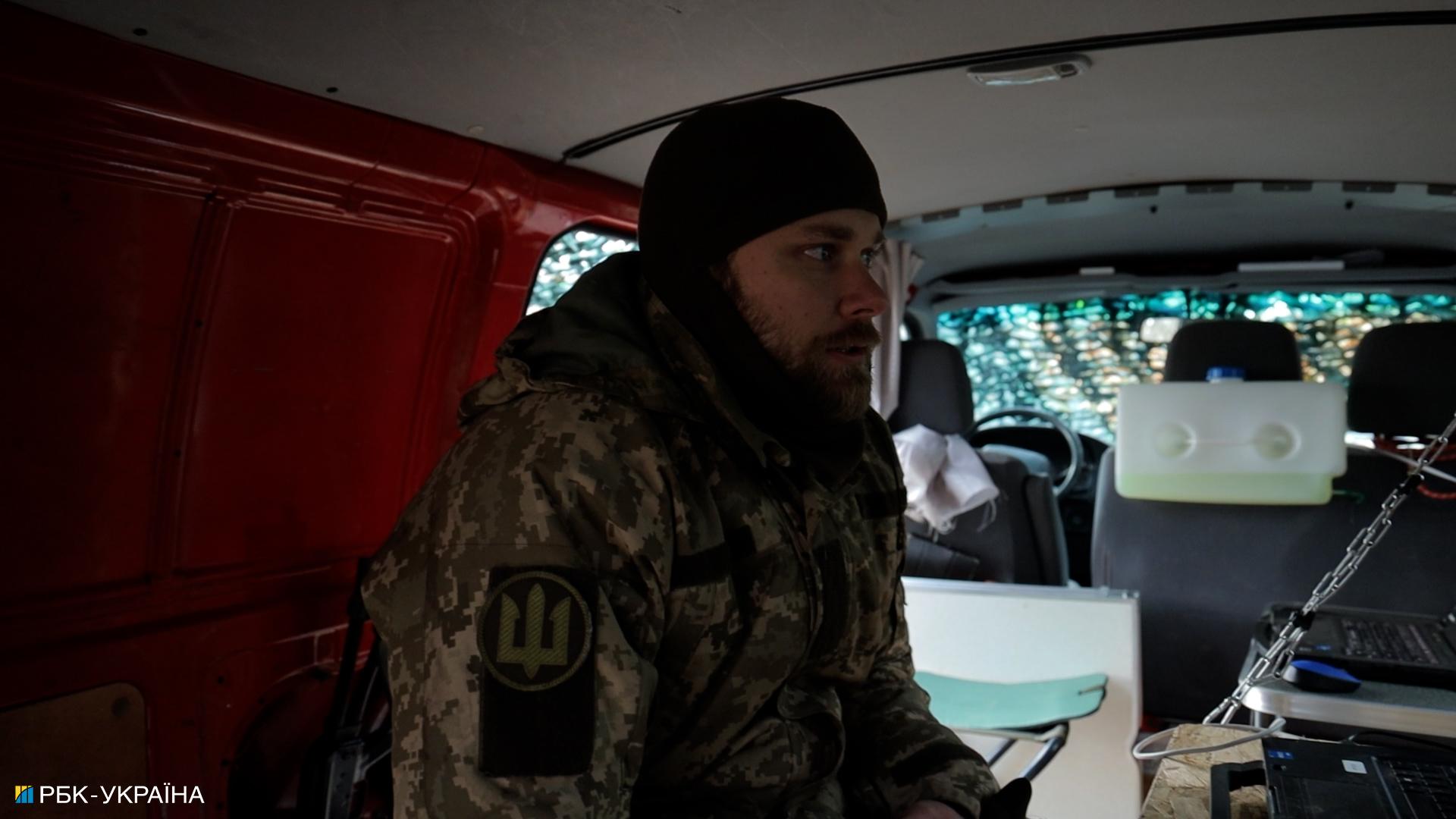 Photo: RBC-Ukraine
Photo: RBC-Ukraine
The Ukrainian military says that the Russians are storming here every day. The movement of Russian armored vehicles is constantly recorded.
All stages of preparation have been completed. The drone has been installed on the runway. The parts on the wings move one by one, followed by a piercing sound. The plane is ready to take off. The pilot radioed in his readiness and waited for the commander's permission to take off.
In a few minutes, the permission is given, the pilot picks up the remote control and launches the drone. A slight hum and the drone quickly takes off into the sky, where it seems to disappear into the clouds. Now the main work will take place in the mini-office on wheels. At first, the screen shows only the chest of clouds, but later the settlements of the Kursk region, which are under the control of the Russian army, begin to appear. Next to a forest belt, we notice an object and approach it.
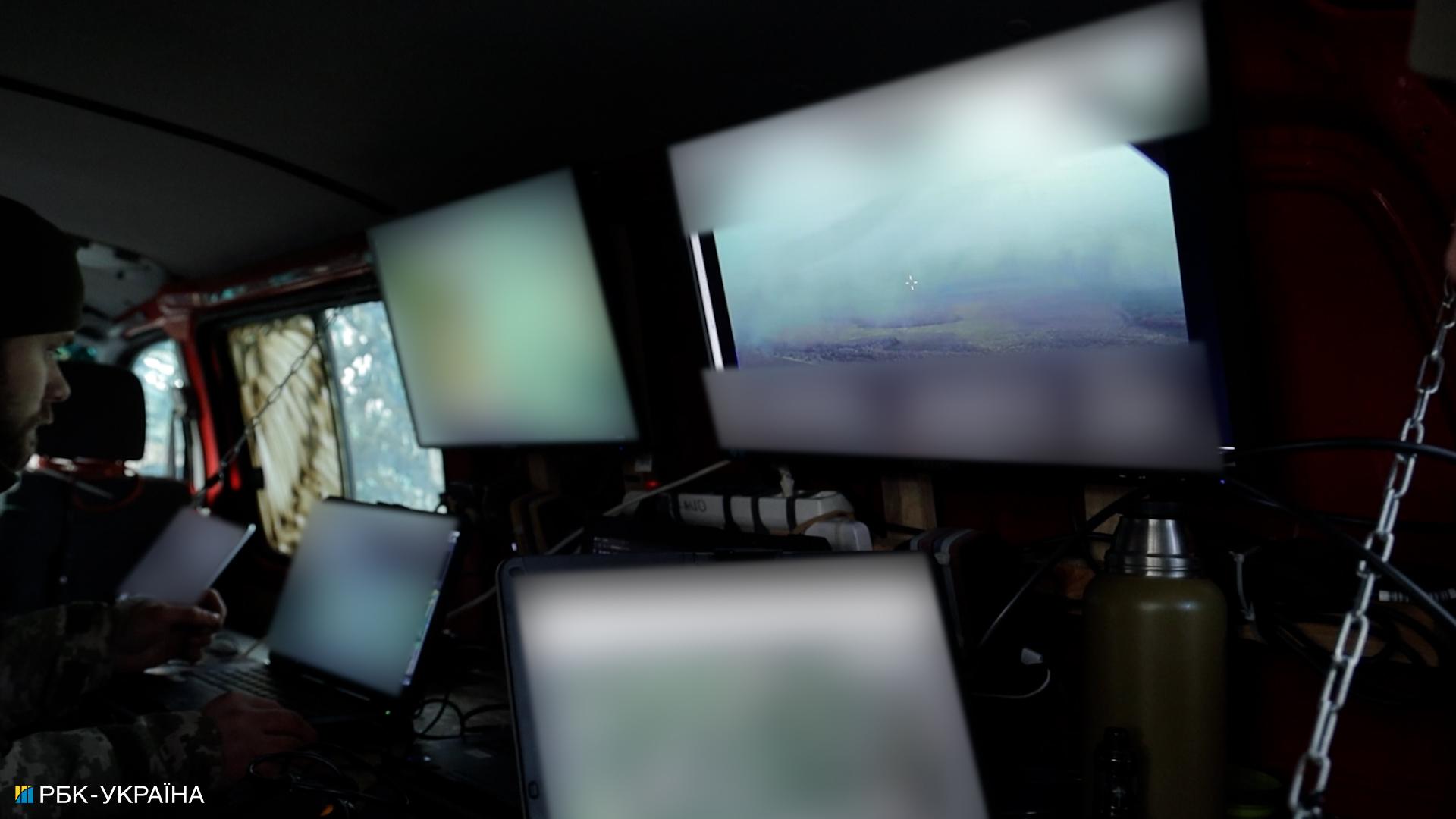 Photo: RBC-Ukraine
Photo: RBC-Ukraine
"A Supercam is lying down," comments Dzvonar.
“This Russian drone has already been destroyed by our neighbor units, so our crew is no longer interested in it. And the Dzvonar's drone continues to move on. Hangars and village buildings are visible from below. You need to look carefully into every corner to avoid missing the location of equipment or personnel.
"Pay attention here. This is a jeep with an electronic warfare device on top. This one can be destroyed,” says the crew commander.
The screen shows the movement of the Russian troops. Ukrainian soldiers quickly transfer the coordinates to another crew to destroy the target. Later, we notice the movement of several more vehicles, one of which is a truck, so the pilots try to look as closely as possible and find out what the Russians are carrying. This is another target.
"Thanks to these aircraft, we were able to destroy over 20 Russian electronic warfare systems, such as Borysoglebsk, R-330 Zhitel, and a rare Krasukha-4,” the commander lists.
The soldiers do not hide the fact that what they like most about their work is watching the Russian troops burn. After they had done a lot of work on analysis and search and worked with adjacent units.
"The best result of the work is burning Russian troops,” says Dzvonar.
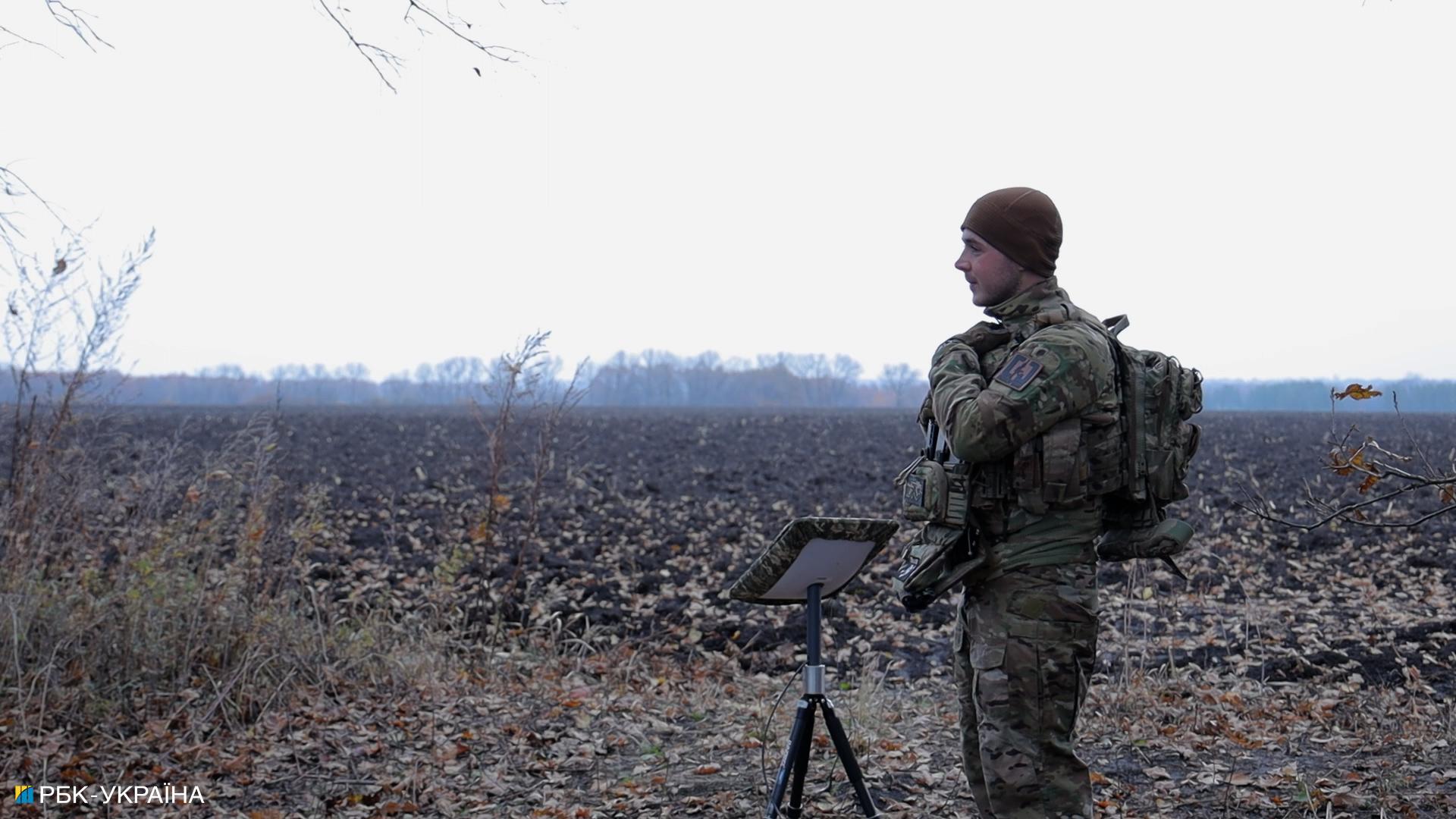 Photo: RBC-Ukraine
Photo: RBC-Ukraine
